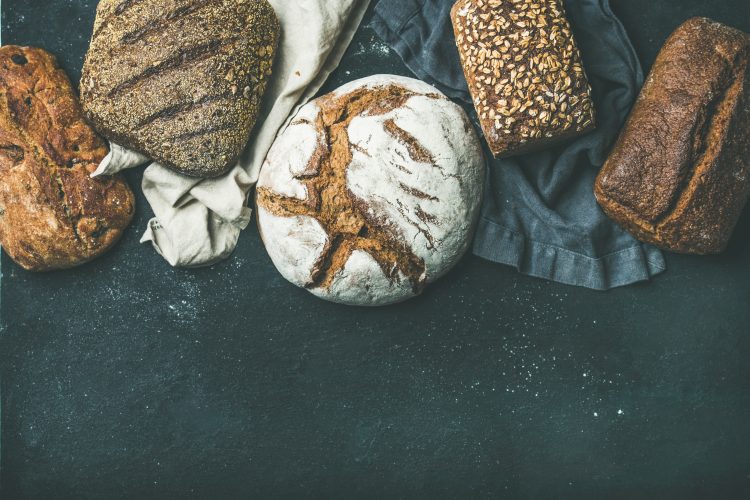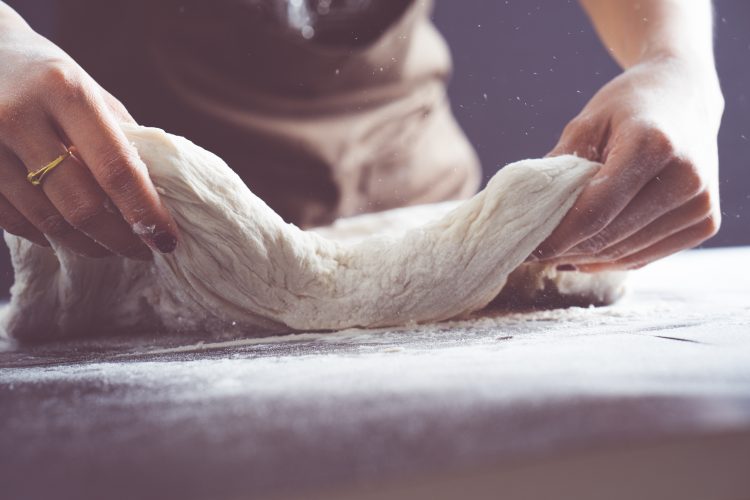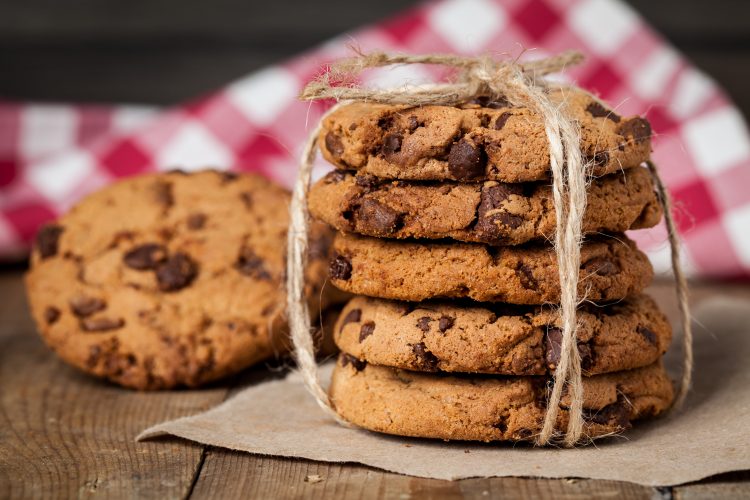The hottest trends in bakery
- Like
- Digg
- Del
- Tumblr
- VKontakte
- Buffer
- Love This
- Odnoklassniki
- Meneame
- Blogger
- Amazon
- Yahoo Mail
- Gmail
- AOL
- Newsvine
- HackerNews
- Evernote
- MySpace
- Mail.ru
- Viadeo
- Line
- Comments
- Yummly
- SMS
- Viber
- Telegram
- Subscribe
- Skype
- Facebook Messenger
- Kakao
- LiveJournal
- Yammer
- Edgar
- Fintel
- Mix
- Instapaper
- Copy Link
Posted: 23 August 2019 | Clara Talens - Senior Researcher at AZTI | No comments yet
What are the leading drivers in the bakery section? AZTI Senior Researcher, Clara Talens, investigates the latest trends.


Global influences are infiltrating bakery product trends and development. Consumers have similar concerns regardless of where they come from and this is affecting innovation. Mintel, the market intelligence agency, has revealed that the new trends leading bakery advances in 2019 are: health and wellness, convenience and sustainability.
Bakery products range in complexity and include items such as bread, cakes and biscuits (including crackers and cookies), which contain wheat flour as the main ingredient as it provides bulk and structure. However, there are other key ingredients being explored that contribute to enhancing the quality of such products.
Novel ingredients
One of the leading drivers when choosing which bread to buy is freshness (Mintel GNPD, 2018). Recent patent activity shows ingredients and processing methods that claim to improve bakery quality, as well as new enzymes and leavening agents to improve texture. Dough workability and bread volume are important factors in bread making. Enzymes used in industrial bread making include amylases, which improve the formation of protein networks in dough that affect crumb structure and bread texture, and improve shelf life; glucose oxidase and lipase to improve dough strength; lipoxygenase to bleach and strengthen dough; and asparaginase to reduce acrylamide formation during baking.
There are ongoing developments in ingredients and methods to enhance bread quality. Leavening of bread is usually performed using Saccharomyces cerevisiae yeast, but recent patent activity has highlighted alternatives. New developments in leavening agents seek to avoid unpleasant aftertastes that can occur with conventional leavening aids, such as bicarbonates and phosphates.
Although advances in research of new ingredients for improving bakery quality is important, it’s also important not to stray too far from consumers expectations. It is worth mentioning the new ‘Bread Law’, a reform that was recently approved by the Spanish Government and came into force on 1 July after 35 years without updating. The most important novelties that have been introduced can be divided into three sections.


Better-for-you biscuits with new ingredients and production methods is a hot trend
Definition of wholemeal and whole grain bread
It is very common to find breads made exclusively with whole wheat flour (from whole grain) and breads made with white flour to which different amounts of bran have been added in the same category, all of them under the label of ‘whole wheat bread’. This is why the Bread Law has deemed it necessary to establish a definition of whole wheat bread that refers only to bread that is prepared exclusively with whole grain or whole grain flour, regardless of the type of cereal, to protect the consumer from this type of confusion.
Definition of artisanal bread
The words ‘artisan’ and ‘traditional’ have been overused. For this reason, criteria that limit the use of the term ‘artisan’ have been set to designate handmade products, leaving out those of industrial manufacture.
Definition of bread made from sourdough
Sourdough not only implies a more artisanal elaboration because the fermentation is longer, it also influences the characteristics of the bread, for example the aromas coming from lactic acid bacteria and a more uniform crumb. This will be possible if the participation of the baker’s yeast is minimal since it accelerates fermentation. Otherwise, what it will achieve is a bread that has aromas from the sourdough but is subjected to rapid fermentation.
When talking about innovation in convenience, frozen bakery makes it easier for consumers to have freshly baked bakery items at home and can also be promoted to reduce food waste. Recent patent activity shows developments in techniques to improve frozen bread like improving time for quick recovery before consumption, formulations for improving tolerance to freezing, or new freeze-resistant yeast strains.
Biscuits
Moving to the biscuit category, developing better-for-you biscuits with new ingredients and production methods is the hottest trend. Cookies sweetened with stevia, high-protein cookies or flaxseed crackers for the carb-conscious are just a few examples.


Biscuits which feature healthy and nutritionally dense ingredients such as niche flours (eg, acorn, teff and chestnut flours), seeded varieties, superfoods and sprouts can appeal to consumers who are looking for a better-for-you snack without sacrificing on indulgence. And, do not forget that they give weight to healthful claims. Reduced sugar (with stevia or tagatose) and low sodium relaunches, as well as thin and mini formats for portion control, are all on the consumer radar when buying healthy snacks.
Health and well-being also include allergens. Gluten is the protein in wheat that contributes to the structure of bread. Recent patents filed for gluten-free bakery include using rice, pea protein and other ingredients such as broad bean flour to provide colour and make the dough easier to knead. The addition of fibre to gluten-free bakery products is a common strategy for increasing their nutritional value while improving texture and mouth-feel. The ability of the fibre to swell after water absorption is its principal physiological and technological effect. To increase dietary fibre in gluten-free bakery items, ingredients from different sources can be incorporated into the recipe to replace gluten. In particular, the by-products obtained from fruit and vegetable processing (eg, juices) are gaining increased attention as novel and economic sources of healthy functional ingredients (Martins et al, 2017, Talens et al, 2017).


The Spanish Government has recently passed a reform to its ‘Bread Law’ that states the term ‘artisan’ should be limited to handmade products only.
Another innovative idea in this category is to transform biscuits into a permissible snack with new serving suggestions that enhance the biscuit-eating experience. For example, biscuits which match specific alcoholic drinks, ice creams or energy-boosting cookies that appeal as an all-day pick-me-up.
As a highly mature category, biscuits can project a more contemporary image among younger consumers by innovating with unusual and novel ingredients and by exploring different cooking methods to provide exciting flavours and authentic textures in bakery products. Improvements of industrial baking ovens can also have a significant impact on performance, energy efficiency and product quality; wood-fired, stoned-oven baked products for example.
Coming back to the real definition of artisanal, in the biscuit category, handmade and artisanal production cues can elevate the premium credentials of biscuits. Although not a cost-efficient option for large manufacturers, some artisanal techniques can potentially be incorporated as a way of enhancing the quality perception of biscuits. For example in bakery, small batches or hand-topped ingredients are emerging to convey a higher production quality. Describing the cookie/ biscuit as artisanal, handmade or crafted can imbue a sense of higher quality and care.
Sustainability
Regarding the sustainability trend in the bakery sector, vegetarianism, organic ingredients and clean label are leading consumers’ willingness to pay. Considering the consumer interest in plant-based diets, there are opportunities for brands to reformulate to tap into the vegan trend as the vegetarian claim is underutilised.
Consumers’ growing interest in vegan and vegetarian diets offers opportunities for biscuit brands to highlight these attributes on pack, especially as many sweet and savoury biscuits are inherently vegetarian. Ingredient lists which are short and focused on natural and organic ingredients appeal to consumers who are seeking a clean-label biscuit. A visual representation of composition can aid consumer understanding and highlight the brand’s transparent approach to ingredients.
Brands are innovating with niche and novel ingredients to boost nutritional value. Novel ingredients such as insect protein and cauliflower flour have been recently used in other food categories but are relatively unexplored in crackers and cookies. Such ingredients can appeal both on novelty and dietary grounds. Insect and invertebrates as ingredients are exceptionally niche, but in the last year there has been a notable uptick in launch activity, primarily in the form of energy and protein bars.
About the author
References
- Mintel GNPD, www.mintel.com
- MARTINS, Z.E., PINHO, O., FERREIRA I.M.P.L.V.O. 2017. Food industry by-products used as functional ingredients of bakery products. Trends in Food Science and Technology, 67, 106-128.
- TALENS, C., ALVAREZ-SABATEL, S., RIOS, Y. & RODRIGUEZ, R. 2017. Effect of a new microwave-dried orange fibre ingredient vs. a commercial citrus fibre on texture and sensory properties of gluten-free muffins. Innovative Food Science & Emerging Technologies, 44, 83-88.




